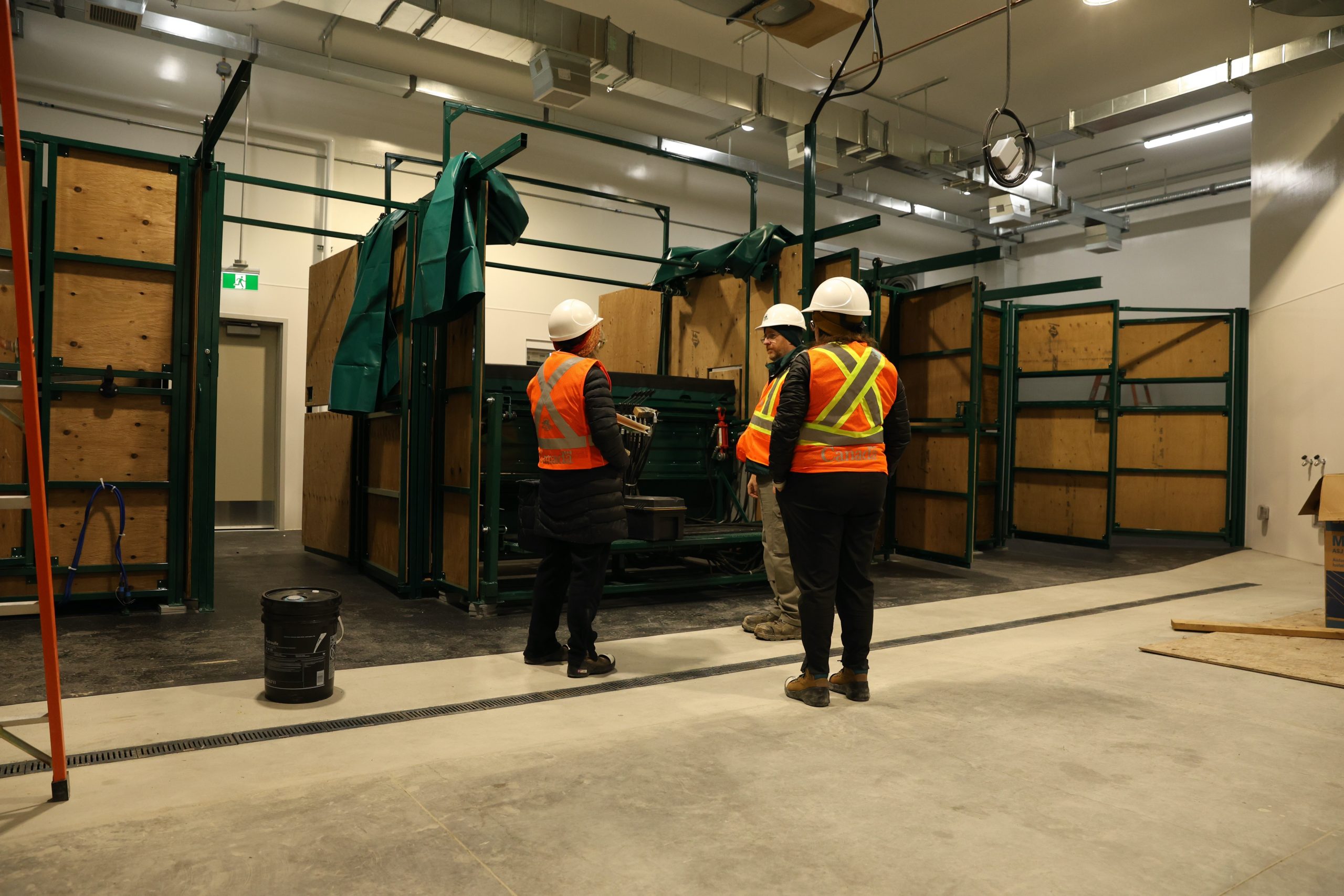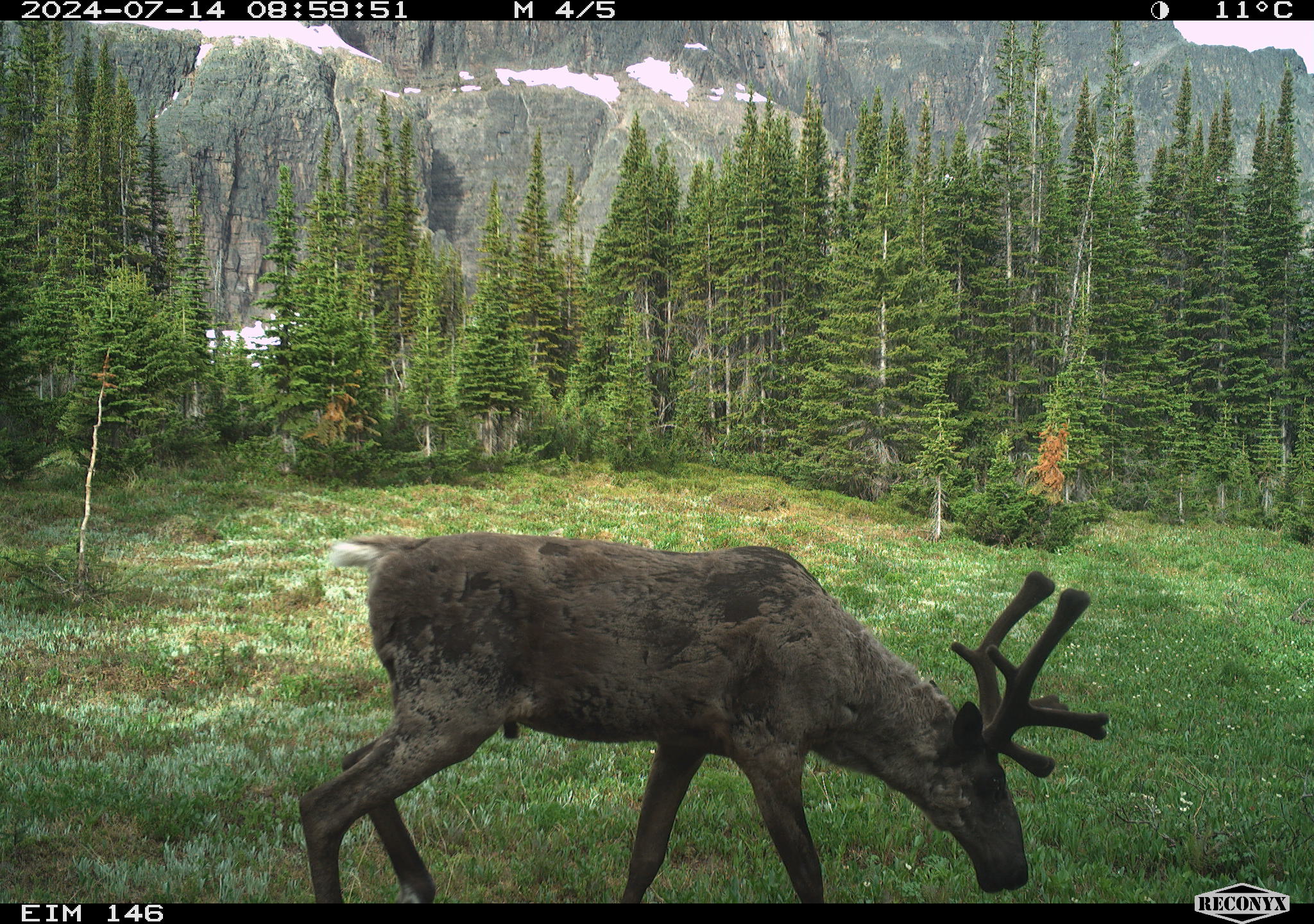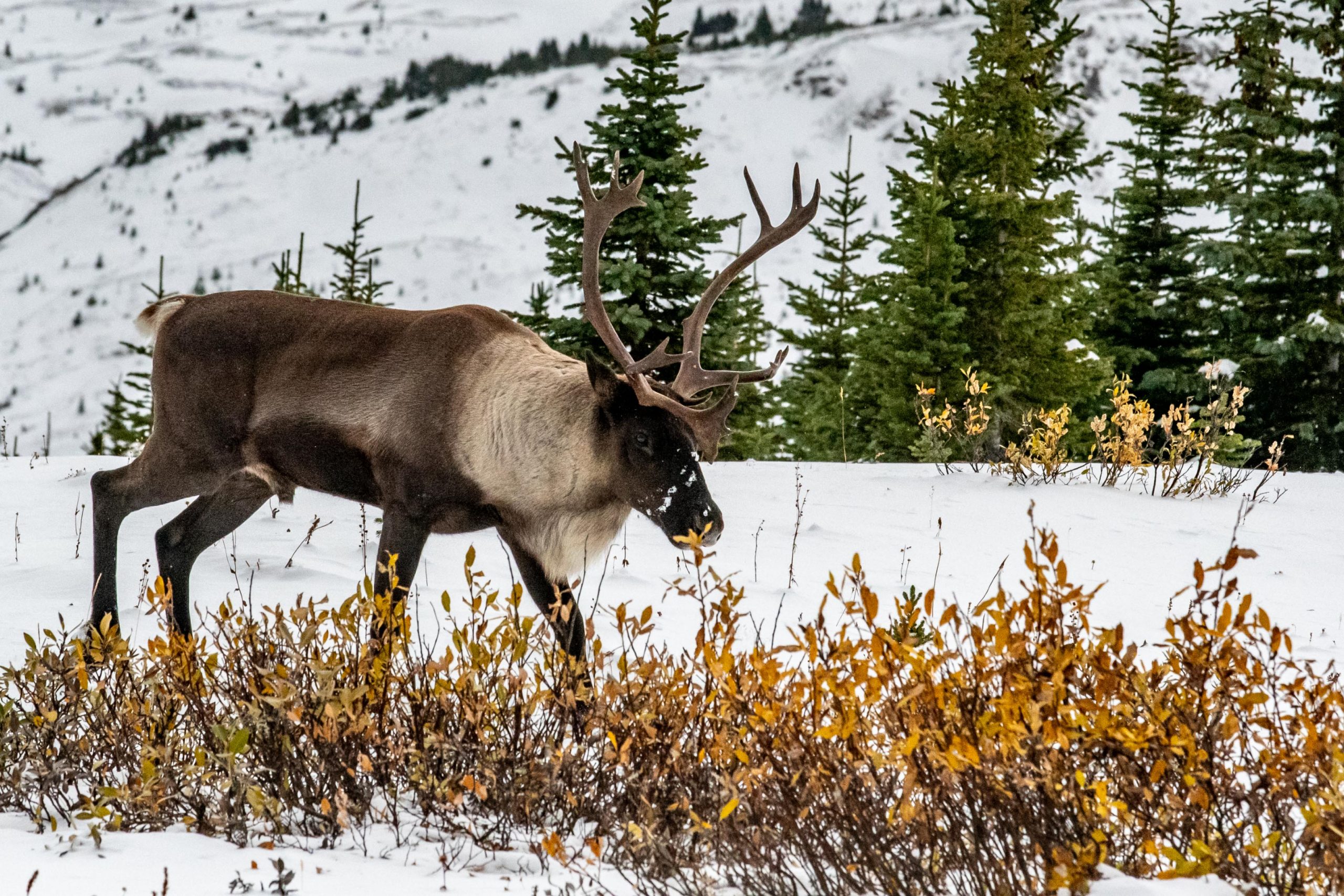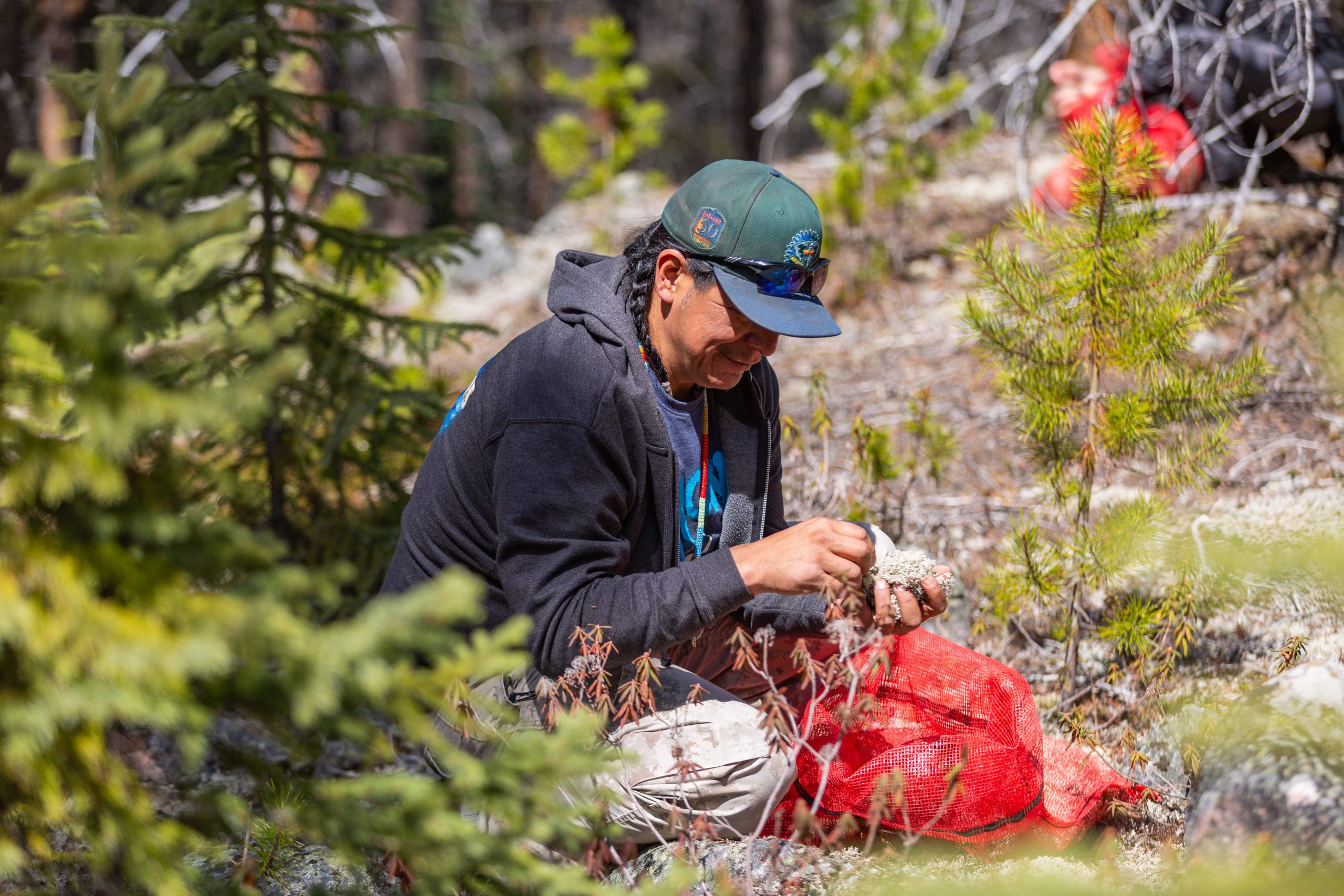Staff at Jasper’s caribou breeding facility are gearing up to officially welcome its first animals.
The 2024 Jasper Wildfire burned some of the $38 million facility’s perimeter fencing, as well as much of the surrounding forest. Otherwise, however, the centre remained largely undamaged by the fires.
Now, the finishing touches are being put on a network of pens and chutes, the barn has been erected and a steel-clad administration building—where an office, lab and necropsy room share space with a kitchen and four bedrooms—is powered and ready for use. Another out building houses machinery and utility vehicles.
“All of the major infrastructure is fully intact and is now complete,” reported Dave Argument, Jasper’s Resource Conservation Manager.

Ahead of the first capture of endangered southern mountain caribou, which is planned for this winter, Parks Canada staff recently collared the remaining (known) female of the nearly-extirpated Brazeau herd.
The capture window that biologists have to work within is short: the animals have to have bred, and for tracking purposes, the capture goes much easier when there’s snow on the ground. Another consideration is environmental conditions: Argument said the colder the weather, the easier the handling is on the animal.
“Colder temperatures reduce stress,” he said.

That’s important, because the capture process is fairly invasive. Once the collared caribou are tracked by GPS, helicopters hover at close distance, then specialized contractors use a net gun to deploy a nylon net. Once netted, the animals will be sedated and transported to the caribou breeding facility.
Salvage Exercise
Because their herd’s survival is so precarious, the three animals which make up the Brazeau herd—along with some of the Tonquin members—will be the first moved to the centre. Caribou born at the facility will eventually be released into the wild Tonquin population. The goal is to expand the Tonquin’s current population of less than 50 animals to approximately 200, according to Parks Canada.
“It’s a ‘salvage exercise,’” Argument says of the plan to capture what’s left of the Brazeau herd. “We’re bringing in the remaining animals to protect them from things like predation and avalanche risk.”
Eventually, if breeding program is successful and Jasper National Park can repopulate the Tonquin herd, they will consider releasing animals back into the Brazeau and Maligne Ranges.

“Jasper National Park has abundant habitat for caribou,” a Parks Canada caribou recovery document states. “Current ecological conditions are favourable for supporting larger caribou populations.”
In the facility, caribou will be fed pellets, but their food supply will be supplemented by lichen—the slow-growing, nutrient-rich plant found on trees and rocks which caribou dig through deep snow to access in the winter. Indigenous partners with the Kelly Lake Cree Nation, the Aseniwuche Winewak Nation and the Mountain Cree have already begun collecting lichen for the facility, according to Parks Canada.

All that’s missing are the residents.
Parks Canada hopes to welcome its first animals soon.
“We are anticipating our initial animal capture will be later this winter,” Argument said.
Bob Covey // bob@thejasperlocal.com


